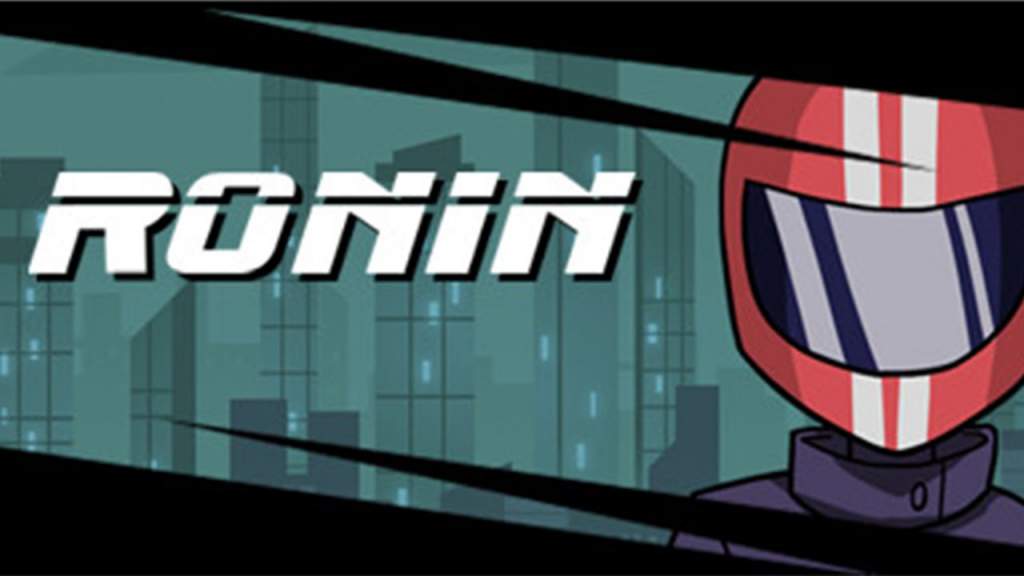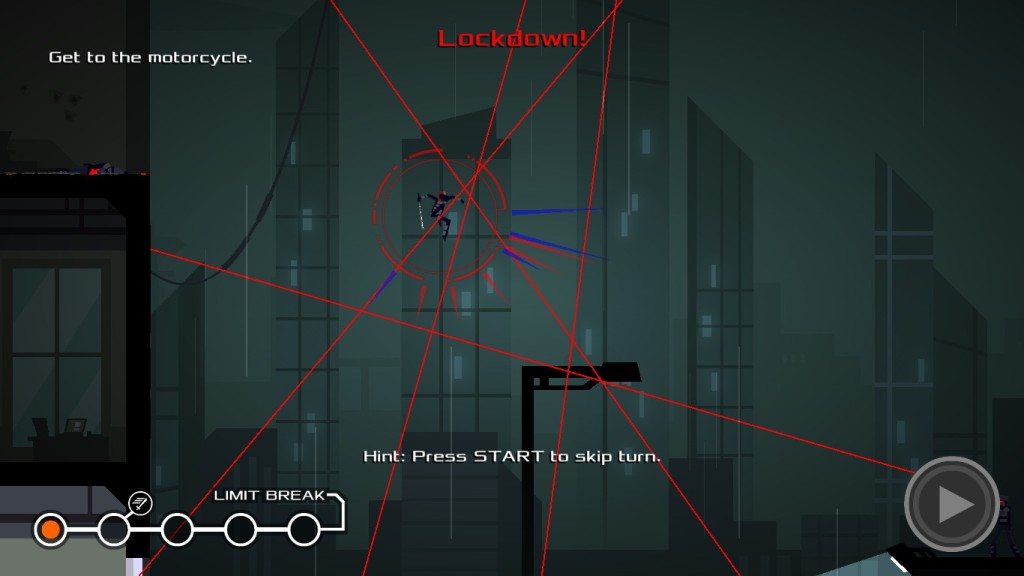RONIN Review
[dropcap]R[/dropcap]ONIN looks a lot like two games I enjoyed a huge amount – the shadowy backdrop and indulgent katana usage feels a lot like Mark of the Ninja, while its jump arcs and vaguely cyberpunk aesthetic reminded me of Gunpoint. In reality, though, despite appearing to be the love-child of these two games, RONIN spends a lot of its time doing its own thing, often very successfully.
[divider]
The premise of RONIN is that you have been wronged by the members of a faceless corporation, and are now seeking your katana-inspired revenge on five of its key figures. Other than a few sentences at the beginning of every chapter, churning out some vague information about your next target, the story largely takes a back seat in favour of you letting you cut your way through to your target as quickly as possible. As a result, levels play out relatively similarly – seek out your target by hacking into computers, cut through anyone who gets in your way while trying to spare any civilians, and slip away into the night. This isn’t to say it feels repetitive though, as the difficulty curve is well-adjusted and, as you unlock new abilities, levels can play out very differently.
Despite its appearance, RONIN doesn’t play out much like a stealth game, instead feeling more like an action-based puzzle game. There are times when trying not to be seen is the right thing to do, but that’s mostly for getting around the civilians, who you’re not supposed to kill, but will raise the alarm if they see you. This is arguably RONIN’s only real nod towards the stealth genre: if a civilian sees you he’ll raise the alarm, and the only way to stop him sending the building into lockdown is by killing him, although either of these results will cause you to miss out on the end of level bonus. The rest of the game, which is almost entirely devoted to combat, is turn-based. Whenever an enemy sees you, time stops, and you plan out your next move according to what your enemies are going to do next. Mostly, this involves you knocking down and then rapidly dispatching guards while avoiding their allies’ gunfire. Where an enemy will shoot next is signposted by red lines which criss-cross the screen, but as the numbers ramp up, making sure you find yourself out of the line of fire in time for your opponent’s next move becomes more and more difficult.
Things start off pretty slow and reasonably clunky as you get to grips with the game, which can get pretty complex in its later stages. While the basic gameplay is pretty simple (analogue stick to jump an opponent, and one button to dispatch them), as you get further through, you find yourself facing off against several enemies at once, most of whom have different modes of attack that you have to slither through. Add to this attempts to maintain combos, which give you access to different moves, and the heart-in-mouth quality of the grappling hook, which can bring either horrible embarrassing failure or moments of sheer accidental brilliance that you have to pretend you totally meant to pull off, and RONIN becomes hugely immersive, in spite of its turn-based gameplay.
Where RONIN falls down is in its lack of content. With only 5 3-level chapters, there’s not a huge amount of game time available, especially if you’re not trying to complete all of the optional objectives. There is new game plus, which ups the difficulty after you complete the game for the first time, but that doesn’t offer anything drastically different. Some levels take quite a while to get through, but that’s mostly because of the sheer weight of the enemy’s numbers or some sprawling, maze-like levels. The content problem becomes even more obvious when you reach the skill tree, which for some reason has been fleshed out with blank spaces that you need to fill in order to access the higher tiers, giving you no benefit for your hard-earned skill points.
The grappling hook brings with it either horrible failure or moments of sheer accidental brilliance that you have to pretend you meant to pull off.
At its best, RONIN is slick and fast-paced, to the point where you can move seamlessly from turn to turn without feeling the break in gameplay, and its gameplay works seamlessly with its fresh, bold art style. It’s a real shame it’s not longer, and that the gameplay doesn’t give more than the subtlest nods to the stealth genre that spawned it. In the end, I think it actually comes across as extremely divisive; if you’ve played what’s come before, it’s almost impossible to compare RONIN to its predecessors, and it wouldn’t surprise me if a lot of people find themselves pretty disappointed. But, if you can appreciate RONIN as its own entity, it can easily offer up a good 20+ hours of gameplay, although you should prepare yourself for some hard graft if you’re looking to get through everything on offer.
[divider_top]
 Want to see more reviews? Take a look at @boargames on twitter, or search for ‘Boar Games’ on Facebook.
Want to see more reviews? Take a look at @boargames on twitter, or search for ‘Boar Games’ on Facebook.


Comments